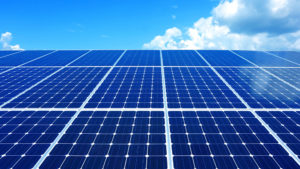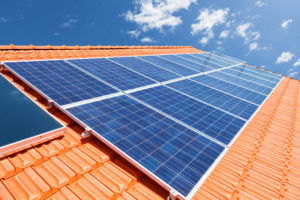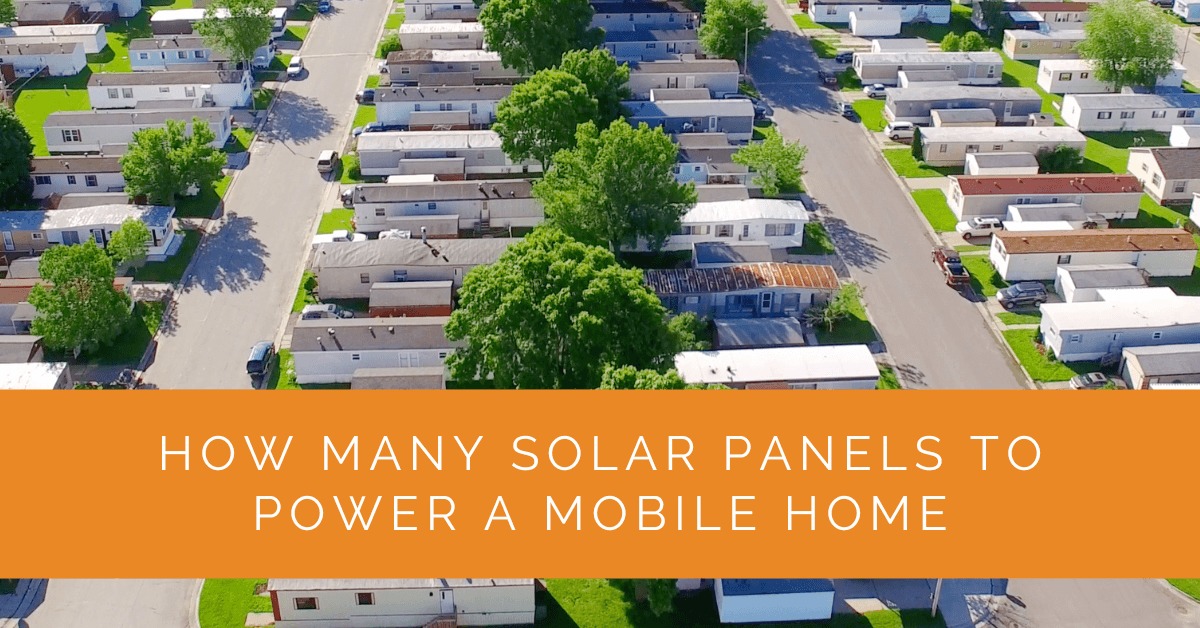In recent years, solar power has gained immense popularity as an environmentally friendly and cost-effective energy solution. Mobile homeowners are now embracing solar panels to harness the sun’s energy and reduce reliance on the grid. But how many solar panels are needed to power a mobile home efficiently? Let’s delve into the factors and calculations in determining the ideal number of solar panels for your mobile home.
Contents
- 1 Key Takeaways
- 2 Factors to Consider for Mobile Home Solar Panel Installation
- 3 Calculating the Number of Solar Panels Needed
- 4 Places to Install Solar Panels on Your Mobile Home
- 5 Choosing the Right Solar Panel Kit for Your Mobile Home
- 6 Case Study: Powering a Mobile Home with Solar Panels
- 7 Expert Insights From Our Solar Installation Specialists
- 8 Experience Solar Excellence with Us!
- 9 Conclusion
Key Takeaways
- Factors such as energy consumption, roof space, panel efficiency, and local conditions should be considered when installing solar panels on a mobile home.
- Accurate calculations, professional advice, and careful planning are essential to determine the number of solar panels needed and optimize energy production.
- Choosing the right solar panel kit that aligns with your mobile home’s requirements, considering portability, weight, cost, performance, and warranty, ensures a reliable and efficient solar power system.
Factors to Consider for Mobile Home Solar Panel Installation
Assessing the Energy Needs of Your Mobile Home
To accurately determine the number of solar panels required, assessing your mobile home’s energy needs is essential. Consider all aspects of energy consumption, including appliances, heating and cooling systems, lighting, and other electrical devices. By reviewing past utility bills and analyzing energy usage patterns, you can establish a baseline for calculating the size of your solar panel system.
Evaluating Available Roof Space for Solar Panel Installation
The available roof space on your mobile home is vital in determining the number of solar panels you can install. Assess your roof’s size, shape, and condition to identify suitable areas for panel placement. South-facing or west-facing roofs generally receive the most sunlight throughout the day, making them ideal for solar panel installation. However, if your roof lacks adequate space or does not have optimal orientation, alternative installation options, such as ground-mounted systems or solar carports, can be considered.
Considering the Solar Panel System Efficiency
Solar panel efficiency is crucial in determining the number of panels needed for your mobile home. Higher-efficiency panels convert more sunlight into electricity, allowing you to generate more power with fewer panels. When selecting solar panels, look for those with higher efficiency ratings to optimize energy production and maximize the use of your available roof space.
Understanding the Climate and Sunlight Conditions
The climate and sunlight conditions in your area significantly impact the performance of your solar panels. Areas with abundant sunlight and minimal shading are ideal for solar panel installations. Consider the average annual sunlight hours, seasonal variations, and potential obstructions that may cast shadows on your panels. By understanding your local climate and sunlight conditions, you can accurately determine the number of panels required to meet your energy needs.

Calculating the Number of Solar Panels Needed
Calculating the solar panels needed for your mobile home involves several considerations. By following a systematic approach, you can ensure that your solar panel system meets your energy requirements efficiently.
Estimating Average Daily Energy Consumption of a Mobile Home
To estimate your average daily energy consumption, reviewing your utility bills over an extended period is essential. Calculate the average kilowatt-hours (kWh) daily to establish a baseline for sizing your solar panel system. Consider variations in energy consumption throughout the year and account for any planned changes or additions to your mobile home’s electrical load.
Determining Solar Panel Wattage and Efficiency
Solar panels are available in different wattages, typically ranging from 250 to 400 watts per panel. To determine the wattage needed for your mobile home, divide your average daily energy consumption (in kWh) by the number of peak sunlight hours in your area. This calculation provides an approximate wattage requirement for your solar panel system.
In addition to wattage, consider the efficiency of the solar panels. Higher-efficiency panels produce more electricity per square foot, allowing you to generate more power with fewer panels. Choose panels with higher efficiency ratings to optimize energy production and maximize the use of your available roof space.
Accounting for System Losses and Battery Storage (if applicable)
When calculating the number of solar panels needed, accounting for system losses is essential. These losses can occur due to wiring, dust accumulation, shading, and temperature. To ensure sufficient energy production, adding a safety margin of around 10-20% to the calculated wattage is advisable. This buffer accounts for any potential inefficiencies or losses in the system.
If you plan to incorporate battery storage in your solar system, consider the additional energy requirements that come with it. Batteries allow for storing excess energy generated by your solar panels for use during periods of low sunlight or grid outages. Assess your energy needs during these times and determine the appropriate battery capacity to meet your requirements. By integrating battery storage into your solar system, you can enhance the reliability and self-sufficiency of your mobile home’s power supply.
Calculating the Total Number of Solar Panels Required
To calculate the total number of solar panels needed for your mobile home, divide the approximate wattage requirement (determined in the previous step) by the wattage rating of the solar panels you’ve selected. This calculation will give you an estimate of the number of panels required to meet your energy needs.
Remember that this calculation provides a general guideline, and it’s always recommended to consult with a professional solar installer. They have the expertise and experience to conduct a comprehensive assessment, considering factors such as shading, system losses, and local regulations. By working with a professional, you can ensure that the size and configuration of your solar panel system are optimized for maximum efficiency and performance.

Places to Install Solar Panels on Your Mobile Home
Strategic placement is key to maximizing energy generation when installing solar panels on your mobile home. Here are some options to consider:
Utilizing the Rooftop Space for Solar Panels
The rooftop of your mobile home is the most common and convenient location for solar panel installation. Evaluate the condition and structural integrity of your roof to ensure it can support the weight of the panels. Identify areas that receive optimal sunlight exposure, typically facing south or west. These orientations capture maximum sunlight throughout the day, producing higher energy. Ensure the roof is free from obstructions such as vents, skylights, or chimneys that may cast shadows on the panels.
Exploring Alternative Installation Options for Mobile Homes
In cases where the roof space is limited or unsuitable for solar panel installation, alternative options can be considered:
Ground-Mounted Systems
A ground-mounted solar panel system can be an excellent alternative if your mobile home has available land surrounding it. Ground-mounted systems allow for flexibility in panel placement and can be positioned in areas with optimal sunlight exposure. Consider the orientation and tilt angle of the panels to maximize energy production.
Solar Carports, Pergolas, or Awnings
Solar carports, pergolas, or awnings serve a dual purpose: providing shade for your vehicle or outdoor spaces while generating solar power. These structures can be installed adjacent to your mobile home and offer an additional surface for solar panel placement. They provide an innovative and aesthetically pleasing solution, particularly if you have limited roof space or want to create a covered outdoor area.
By exploring alternative installation options, you can overcome any limitations posed by the roof space on your mobile home and still benefit from solar energy generation.
Maximizing Solar Power Generation with Tilt and Orientation
The tilt and orientation of your solar panels significantly impact energy production. Optimizing these factors can maximize the efficiency of your system:
Adjustable Tilt Systems
Adjustable-tilt systems allow you to change the angle of your solar panels throughout the year, optimizing their position for different seasons. You can maximize energy production by adjusting the tilt angle according to the sun’s position. These systems are particularly beneficial in areas with significant seasonal variations in sunlight.
Fixed Tilt Systems
Fixed-tilt systems have a predetermined tilt angle suitable for your location’s latitude. While they do not offer the flexibility of adjustable-tilt systems, they are still effective in capturing sunlight and generating solar power. Ensure that the fixed tilt angle is optimized for the average sunlight conditions in your area.
Consider the tilt and orientation options that best suit your location, considering factors such as latitude, climate, and seasonal variations in sunlight. By carefully adjusting the tilt and orientation of your solar panels, you can optimize their exposure to the sun and maximize energy generation throughout the year.

Choosing the Right Solar Panel Kit for Your Mobile Home
Selecting the right solar panel kit is crucial to ensure your solar power system’s efficiency, reliability, and longevity. Here are key considerations when choosing a solar panel kit for your mobile home:
Explaining Different Types of Solar Panel Systems
Solar panel systems come in various types, each with advantages and considerations. Understanding these types will help you make an informed decision:
- Grid-Tied Systems: These systems are connected to the utility grid, allowing you to feed excess energy back into the grid. They are cost-effective and do not require battery storage. Grid-tied systems are ideal to offset your energy consumption and potentially earn credits through net metering.
- Off-Grid Systems: Off-grid systems operate independently of the utility grid. They require battery storage to store excess energy for use during periods of low sunlight or grid outages. Off-grid systems provide complete energy independence but require careful solar panel array and battery bank sizing to meet your energy needs.
- Hybrid Systems: Hybrid systems combine the features of grid-tied and off-grid systems. They are connected to the grid but also have battery storage capabilities. Hybrid systems offer flexibility, allowing you to use stored energy during grid outages or periods of high electricity demand.
Consider your energy requirements, budget, and goals when choosing the type of solar panel system that best suits your mobile home.
Considerations for Mobile Homes: Portability and Weight
As a mobile homeowner, portability and weight are important considerations when selecting a solar panel kit. Since your mobile home may be relocated, opt for lightweight, portable solar panels that can be easily installed, removed, and transported. Flexible solar panels are a popular choice for mobile homes due to their lightweight nature and ability to conform to different surfaces.
Assessing Cost, Performance, and Warranty of Solar Panel Kits
When evaluating solar panel kits, it’s crucial to consider the cost, performance, and warranty. Compare the prices of different kits while keeping in mind the quality and reputation of the manufacturer. Look for kits that provide high-performance solar panels and reliable components, such as inverters and mounting systems. Additionally, ensure the kit has a comprehensive warranty to protect your investment and provide peace of mind.
By assessing solar panel kits’ cost, performance, and warranty, you can make an informed decision that aligns with your budget and long-term goals.
Case Study: Powering a Mobile Home with Solar Panels
Background
At Solar Panels Network USA, we recently assisted a client, Jim, a mobile homeowner keen on reducing his electricity bills and environmental footprint. Jim’s goal was to transition to solar energy, ensuring he had enough power to meet his mobile home’s energy demands.
Project Overview
Jim’s mobile home was equipped with several electrical appliances, including a refrigerator, microwave, air conditioning unit, and various electronic devices. The challenge was to calculate the number of solar panels required to sustain these energy needs, considering Jim’s mobile home’s unique specifications and constraints.
Initial Assessment
Energy Consumption Analysis
We began by analyzing Jim’s past utility bills to understand his average daily energy consumption. Jim’s home consumed approximately 20 kWh per day. This figure was critical in determining the solar panel system’s size.
Roof Space Evaluation
Jim’s mobile home had a south-facing roof, ideal for maximum sunlight exposure. However, the available roof space was limited to 300 square feet. We also considered the possibility of using ground-mounted panels if additional space was required.
Calculation and Planning
Solar Panel Efficiency and System Sizing
Given the roof space constraints and Jim’s energy consumption, we selected high-efficiency 350-watt solar panels. We calculated the required system size as follows:
- Daily Energy Needs: 20 kWh/day
- Peak Sunlight Hours: 5 hours/day (average in Jim’s location)
- System Size Calculation:

- Number of Panels:

We recommended installing 12 high-efficiency panels, ensuring they fit within the available roof space and met Jim’s energy needs.
System Losses and Backup Storage
Considering potential system losses and to enhance reliability, we factored in a 15% efficiency loss. Additionally, Jim opted for a battery storage system to store excess energy for use during cloudy days or nighttime.
Installation Process
Rooftop Installation
We installed 12 high-efficiency panels on Jim’s south-facing roof. The installation process included:
- Ensuring the roof’s structural integrity to support the panel weight.
- Using appropriate mounting hardware to secure the panels.
- Optimizing the tilt and orientation for maximum sunlight exposure.
Inverter and Battery Storage
An inverter was installed to convert the DC electricity generated by the panels into usable AC electricity. A battery storage system was also integrated to provide backup power, ensuring Jim’s mobile home had a reliable energy supply even during grid outages.
Results and Benefits
Energy Independence
Post-installation, Jim’s mobile home became significantly less reliant on the grid. The solar panel system provided enough energy to meet his daily needs, and the battery storage system offered additional security.
Cost Savings
Jim observed a substantial reduction in his monthly electricity bills. The initial investment in high-efficiency panels and a battery storage system proved cost-effective in the long run.
Environmental Impact
By switching to solar power, Jim contributed to reducing his carbon footprint. The transition to renewable energy aligned with his goal of living a more sustainable lifestyle.
Summary
Jim’s journey to powering his mobile home with solar energy highlights the importance of accurate calculations, efficient planning, and professional installation. By carefully assessing energy needs, available roof space, and solar panel efficiency, we provided a tailored solution that met Jim’s requirements. The project resulted in significant cost savings, energy independence, and environmental benefits. At Solar Panels Network USA, we are committed to helping clients harness the sun’s power efficiently and sustainably, ensuring a brighter, eco-friendly future for all.
Expert Insights From Our Solar Installation Specialists
Calculating the energy consumption accurately is the first step to determining the number of solar panels needed. Each mobile home has unique energy needs, and this personalized approach ensures efficiency and cost savings.
Senior Solar Engineer
Considering the roof space and orientation is crucial for maximizing sunlight exposure. Alternative solutions like ground-mounted systems or solar carports can be explored if roof space is limited.
Solar Installation Expert
Efficiency and quality of the solar panels play a significant role in overall performance. Investing in high-efficiency panels might have a higher upfront cost but provides better energy production and long-term savings.
Renewable Energy Consultant
Experience Solar Excellence with Us!
Trust in Solar Panels Network USA, where our seasoned experts deliver top-quality solar solutions for homes and businesses nationwide. With a legacy of countless successful installations and a commitment to sustainable energy, we’re your reliable partner in the solar journey. Ready for a brighter, eco-friendly future? Call us now at (855) 427-0058 and harness the power of the sun!
Conclusion
When installing solar panels on your mobile home, factors such as energy consumption, available roof space, panel efficiency, and local conditions play a crucial role. By carefully considering these factors, accurately calculating the number of solar panels needed, and exploring various installation options, you can optimize energy production and maximize the benefits of solar power for your mobile home. Selecting the right solar panel kit ensures the reliability and efficiency of your system, allowing you to harness the sun’s power and contribute to a sustainable future while enjoying the cost savings of clean energy.
About the Author
Solar Panels Network USA stands at the forefront of solar energy solutions, driven by a team of seasoned solar engineers and energy consultants. With over decades of experience in delivering high-quality solar installations and maintenance, we are committed to promoting sustainable energy through customer-centric, tailored solutions. Our articles reflect this commitment, crafted collaboratively by experts to provide accurate, up-to-date insights into solar technology, ensuring our readers are well-informed and empowered in their solar energy decisions.

